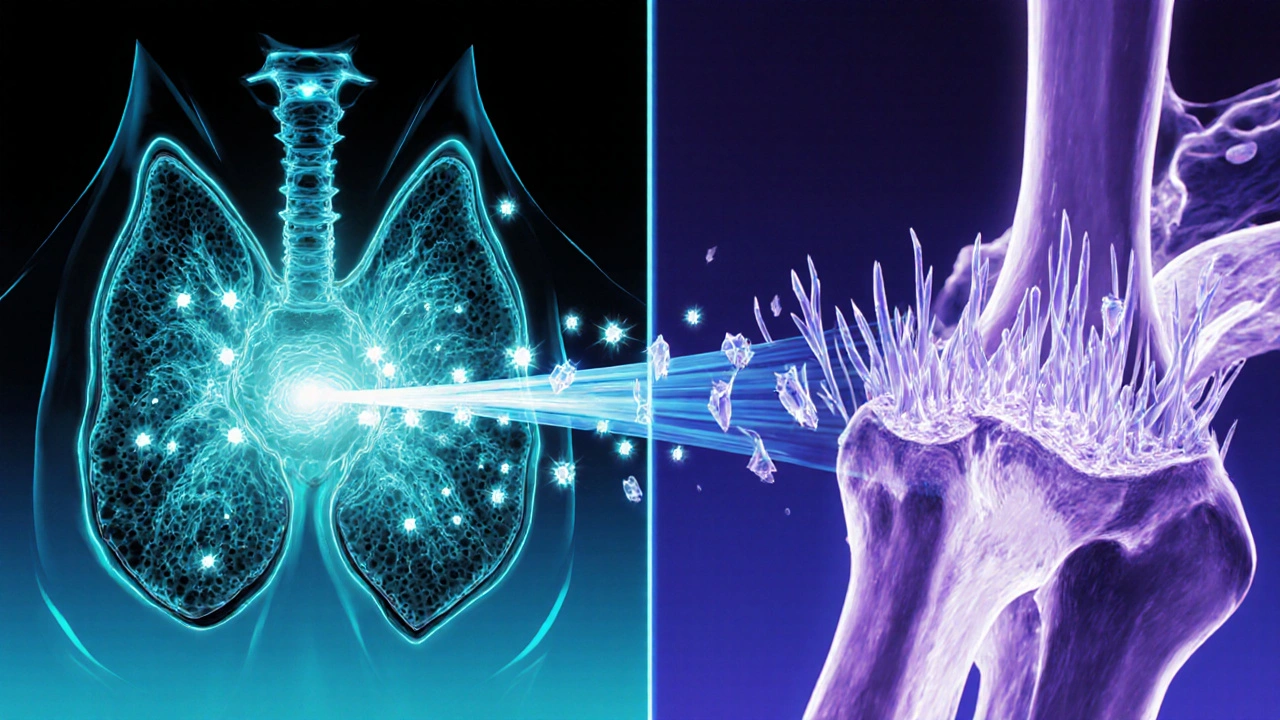Calcitonin for Bone Pain: What It Is and How It Helps
When calcitonin, a hormone naturally produced by the thyroid gland that helps regulate calcium levels and slow bone breakdown. Also known as salmon calcitonin, it's used medically to treat conditions where bones lose density too quickly, like osteoporosis or Paget’s disease. Bone pain from these conditions isn’t just discomfort—it can limit movement, disrupt sleep, and make daily tasks harder. Calcitonin steps in by blocking the cells that break down bone, giving the body a chance to rebuild and stabilize. It’s not a cure, but for many, it’s a key tool in reducing pain and preventing fractures.
Calcitonin works best when bone loss is active and symptoms are fresh. People with recent spinal fractures, especially post-menopausal women, often see the most relief. It’s also used in rare cases like bone metastases or hypercalcemia, where too much calcium leaks into the blood from crumbling bone. Unlike some drugs that just mask pain, calcitonin targets the root cause: excessive bone breakdown. That’s why it’s often paired with calcium and vitamin D—to support the rebuilding process while the hormone slows the damage.
It’s not the first choice for everyone anymore. Newer drugs like bisphosphonates and denosumab are more powerful at increasing bone density. But calcitonin still has a place—especially for those who can’t tolerate other treatments or need quick pain relief. It comes as a nasal spray or injection, both easy to use at home. Side effects are mild for most: nausea, flushing, or a runny nose. Serious reactions are rare.
What you won’t find in every doctor’s office is a clear map of who benefits most. That’s where real-world experience matters. Some patients report pain relief within days. Others need weeks. And for some, it’s a bridge—something to use until a stronger option kicks in. The posts below dive into these nuances: how calcitonin compares to other treatments, what the latest research says about its long-term use, and how patients manage side effects while keeping pain under control. You’ll also see how it fits into broader bone health strategies, including diet, movement, and monitoring bone density over time.
If you’re dealing with unexplained bone pain, especially if you’ve been diagnosed with low bone density or have a history of fractures, calcitonin might be part of your story. These articles don’t just list facts—they show you what actually works for real people, what doesn’t, and how to talk to your doctor about your options.
Calcitonin for Bone Pain Relief: How It Works, Benefits & Guidelines
Explore how calcitonin works to ease bone pain, when it’s the right choice, dosing options, benefits, risks and practical prescribing tips for clinicians.
learn more